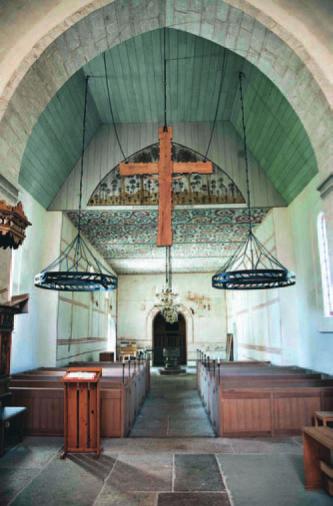Basic HTML Version

14
BCD Special Report on
Historic Churches
18th annual edition
Fabric-friendly
Heating
Dario Camuffo
I
n 2002
an EU-funded programme, the
Friendly Heating Project, started to examine
the impact of heating systems on historic
church paintings, statuary, furniture and fabric.
At that time, published research on church
heating was limited to a handful of case studies.
Only one overview of all heating systems
existed, the very useful Council for the Care
of Churches publication, Heating your Church
(W Bordass and C Bemrose, 1996). However,
this overview was concerned with general issues
such as safety and costs. It did not examine the
potential impact of heating on historic buildings
and the often precious artefacts they contain.
Until recently, the prevailing view has been, as
ED Mills wrote in 1959, that: ‘Church heating
systems should be designed for economical
running, the minimum of labour in servicing
and maintenance, unobtrusive appearance
and efficiency as a heating medium’. Heritage
conservation issues have often been ignored.
Objects continually interact with their
environments and these interactions are
governed, in particular, by temperature and
relative humidity (RH), which ultimately
control the moisture content in materials.
The current condition of a historic object is
determined by a lifetime of these interactions,
including adaptation and acclimatisation. There
is, therefore, a natural set of environmental
conditions experienced during the history
of an artefact: its ‘historical climate’.
The Friendly Heating Project (2002–
2005) was designed to carefully study and
evaluate the characteristics of all heating
systems, especially their potential impact
on a variety of historical artworks, in
order to devise and test the best system.
The goal was to preserve artworks in their
historical climate while providing compatible
comfort heating for the congregation.
This article summarises the main outcomes
of the Friendly Heating Project and more recent
studies to help congregations find the most
appropriate solution for the conservation of
the cultural heritage kept in their churches.
Reversibility
Given the limits of technology, rising safety
standards and the demand for ever greater
levels of comfort, no heating system can be
expected to operate for more than 30 years.
Inevitably, any installation requires intervention
and potential damage to church fabric.
Electrically-fed infrared emitters were installed inside the chandeliers in this church to provide heating to the
upper bodies of churchgoers using the front pews. The heating project, led by Tor Broström of the University of
Gotland, Sweden, also incorporated heating foils and heated carpets fitted inside the box pews to warm the feet
and lower body. (Photo: Tor Broström)

